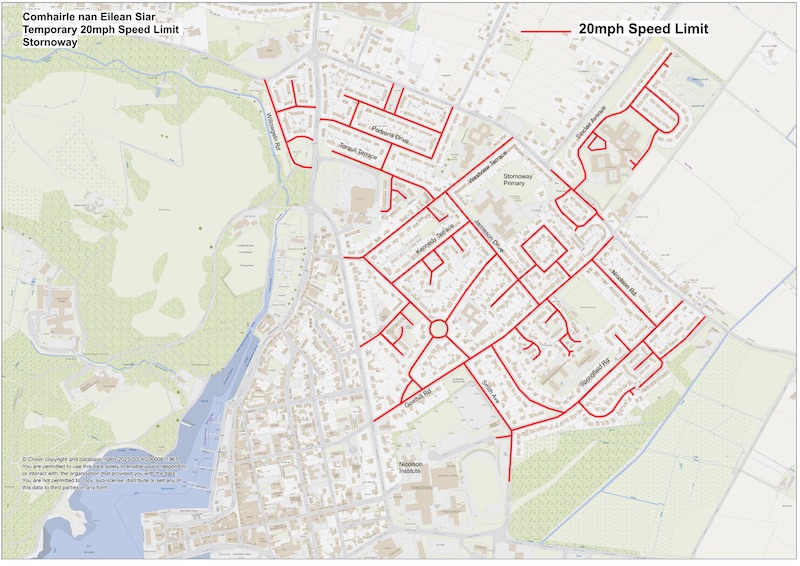Temporary 20mph speed limits are being introduced across parts of the Western Isles as Comhairle nan Eilean Siar begins local trials under the Scottish Government’s National 20mph Strategy.
The new limits, which will run for an initial period of 18 months, are designed to make roads safer in built-up areas and offer greater protection to vulnerable road users, including children walking to school and cyclists using residential routes.
If the trials prove successful and receive strong public support, the Comhairle will move to make the changes permanent through formal Traffic Regulation Orders.
The national strategy, set by the Scottish Government, aims to ensure that all suitable built-up areas across Scotland adopt 20mph limits as standard, reflecting growing evidence that lower speeds significantly reduce the severity of collisions and make everyday journeys safer.
A temporary 20mph zone was introduced in Castlebay earlier this year, forming the first stage of the Western Isles rollout.
Within the next month, similar measures will be implemented in Stornoway, with a focus on areas surrounding Stornoway Primary and the Nicolson Institute.
The targeted approach marks a shift from the wider town-wide proposals put forward in 2021, which faced objections at the time.
The Comhairle says the current plans have been shaped around specific community concerns, with the aim of delivering meaningful safety improvements where they are needed most.
Further temporary limits are planned in Balivanich and Tarbert in the coming months.
Main roads near Lionel School, Sgoil a Bhac, Sgoil an t-Oib and Eoligarry School will see existing 20mph limits extended and upgraded from variable restrictions to permanent ones during the trial. A brand-new 20mph zone will also be introduced at Sgoil Uibhist a Tuath.
The Comhairle says the measures will create calmer, safer environments around schools and residential areas, while also contributing to wider efforts to improve quality of life in island communities.
The trials will be monitored closely, with feedback from residents helping determine whether the new limits should become permanent once the 18-month period ends.





